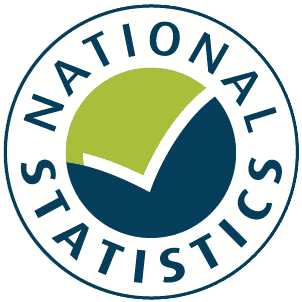Outcomes for children looked after by LAs: 31 March 2012
Outcome measures at national and local authority (LA) level in England for children continuously looked after for at least 12 months.
Applies to England
Documents
Details
Reference ID: SFR32/2012
Publication type: statistical first release
Publication data: local authority data
Region: England
Release date: 12 December 2012
Coverage status: provisional
Publication status: published
This statistical first release (SFR) provides information at national and local authority (LA) level on the outcomes for children who have been looked after continuously for at least 12 months at 31 March 2012.
This is the third year that this annual statistical release has been published. Outcomes reported include educational attainment, special educational needs (SEN), exclusions from school, health, development of children aged under 5, education and employment after year 11, offending and substance misuse.
This SFR also includes information on the 2 impact indicators for looked-after children:
- The attainment gap between looked after children and non-looked after children achieving level 4 in both English and mathematics at key stage 2
- The attainment gap between looked after children and non-looked after children achieving ‘the basics’, ie grade A* to C in GCSE English and mathematics at key stage 4.
The main change from last year’s SFR is around the definition of looked-after children used for the national attainment measures. Last year, the pupil premium cohort (children looked after continuously for 6 months) was used. This year, only children looked after continuously for at least 12 months at 31 March have been included. The definition of 12 months has been used so the support that a looked-after child has received from a local authority has had time to have an impact on educational results.
The calculation of the percentage of children achieving a particular key stage has also changed to take into account only those for whom matched national pupil database (NPD) data is available, rather than all those looked-after children in the relevant age group.
Key points
Of the children looked after continuously for 12 months during the year ending 31 March 2012:
- At key stage 1, 67% achieved the expected level in reading, 57% achieved the expected level in writing and 71% achieved the expected level in mathematics compared with 64%, 56% and 68% in 2011 for each subject respectively
- At key stage 2, 50% achieved the expected level in English and mathematics in 2012 (not comparable to previous years)
- At key stage 4, the percentage of children looked after achieving the basics, ie A* to C in GCSE English and mathematics continued to increase from 14% in 2011 to 15% in 2012. The percentage achieving 5+ A* to C at GCSE or equivalent including English and mathematics has also increased from 14% in 2011 to 15% in 2012
- 6.9% of those aged between 10 and 17 years had been convicted or subject to a final warning or reprimand during the year
- 4.1% were identified as having a substance misuse problem during the year.
On Thursday 10 January 2013 the underlying data for this release was published.
Additional analysis of absence rates for children looked after continuously for at least 12 months was published on 9 April 2013. This new table, LA11, has been included in the local authority tables which can be downloaded from this page. This includes local authority and national data from 2008 to 2012. Authorised, unauthorised and overall absence rates have been published, as well as persistent absence. The threshold for persistent absence changed in 2011, from 20% of sessions missed to 15% of sessions missed. This publication now includes the 15% persistent absence threshold for all years.
The following key points are given for absence data for children looked after continuously for 12 months:
- absence rates and persistent absence for children looked after have continued to fall from 2008 to 2012
- in 2012, children looked after missed 3.4% of sessions due to authorised absence. This is lower than the figure for all children for 2012 which was 4.1%. For unauthorised absence the figure for looked after children was 1.2% compared to 1.0% for all children.
- in 2012, 6.1% of children looked after were classified as persistent absentees, compared with 5.2% of all children.
Further details on absence for all children can be found in the statistical first release, Pupil absence in schools in England, including pupil characteristics 2011/12. The additional absence table (LA11) has been added to the . Underlying data has also been provided.
Children looked-after statistics team
Email CLA.STATS@education.gov.uk
Bree Waine 01325 340 824
